Apr
9
2012
or The Architectural Significance of Lot’s Daughters
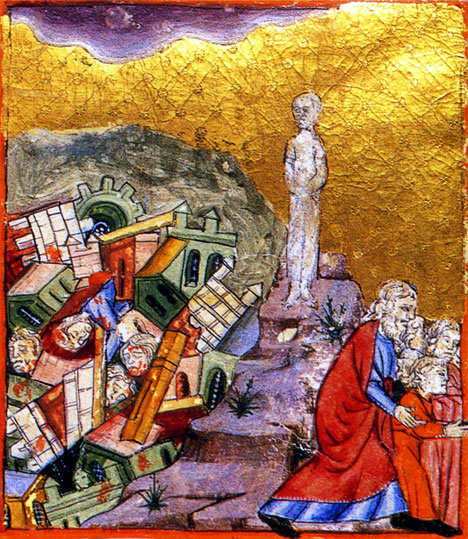
“His eyes [were] like a flame of fire …
[and] out of His mouth went a sharp two-edged sword”
(Revelation 1:14-16)
“I will set My face against you,
and you shall be defeated by your enemies.”
(Leviticus 26:17)
The Tabernacle layout to the Bible narratives is like the Globe Theatre to Shakespeare. [1] If we understand the correspondences we can get the “architectural” relationships worked out. The same blueprint appears again and again, and it explains the motivation of “righteous Lot” in the offering of his daughters to the men of Sodom. Continue reading
1 comment | tags: Abraham, Altar of the Abyss, Genesis, Lot, Sodom, Systematic typology, Tabernacle, Ten Commandments | posted in Biblical Theology, The Last Days
Mar
5
2012
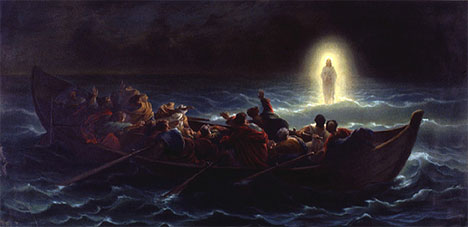
“…and they saw the God of Israel. And there was under His feet as it were a paved work of sapphire stone, and it was like the very heavens in its clarity. But on the nobles of the children of Israel He did not lay His hand.” (Exodus 24:10-11)
Well, I’ve been blustering on about art and “intuition” in generalities for about a week now. Fluffy generalities are exactly the kind of thing that annoys me about many Biblical scholars, and I reckon it annoys God, too. They never seem to get down to specifics, and He is very specific. This shows in His architecture, and also in His literary architecture. So, here, in a section of Matthew 14, is a chance for me to get specific and show you what is possible with this “killer hermeneutic.” [1]
After a brief look at the structure of this passage the other day, I thought I’d spend some more time on it. A closer analysis has revealed an even greater beauty than I expected. (I have briefly referenced the order of words in the Greek to avoid any great missteps, so it may not be perfect, but it’s close.) Much learning hath indeed made me mad but I hope you’ll take a few minutes to see this passage through my eyes.
Continue reading
Comments Off | tags: Atonement, Booths, Covenant curse, Covenant Theology, Feasts, High Priest, Laver, Literary Structure, Matthew, Moses, Tabernacle, Ten Commandments | posted in Against Hyperpreterism, Bible Matrix, Biblical Theology, The Last Days
Dec
19
2011
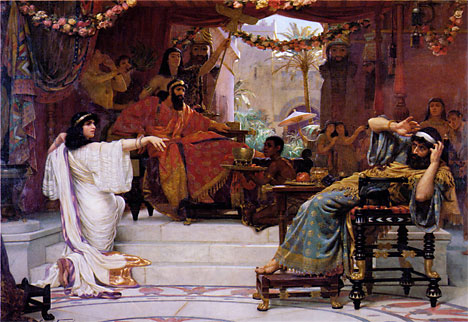
The systematic typology of the Bible Matrix allows us to follow the structures of the Torah thoughout the rest of the Bible. Here’s something that links the Restoration era with the book of Deuteronomy.
Continue reading
Comments Off | tags: Baptism, Deuteronomy, Esther, Exodus, James Jordan, Jeremiah, Mordecai, Moses, Systematic typology, Tabernacle, Ten Commandments, The Law | posted in Biblical Theology, Quotes, The Restoration Era
Dec
9
2011
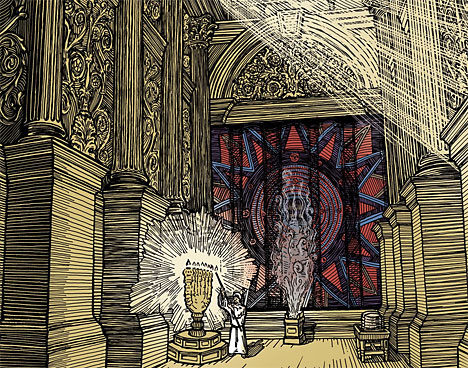
The Living Dead and the Dead Living
Creation: In part 1 we saw that the theme of the first stanza of 2 Thessalonians 2 was the “Sabbath” rest of the church. Paul writes to remove the alarm caused by the “conspiracy theorists” who attempted to disturb it.
Division: The second stanza concerned the splitting of the church into two — those who would persevere despite the growing threat of tribulation throughout the empire [1], and those who would succumb to their fears. The attacks would culminate in the completion of Herod’s Temple and the Nero’s burning of Rome in AD64. The first threw doubt upon the words of Christ concerning the Temple, and the second, though hardly believed, was an excuse to scapegoat this new Jew-Gentile sect, now legally separated from the protection afforded to Jews by Rome. The gospel tore Judaism in two. Then it united those believing Jews with Gentiles. But as in the wilderness, new Israel would be threshed and purified.
Continue reading
Comments Off | tags: AD70, Atonement, Booths, Dispensationalism, Feasts, James Jordan, Literary Structure, Paul, Ray Sutton, Revelation, Ten Commandments, Thessalonians | posted in Bible Matrix, Biblical Theology, The Last Days
Sep
7
2011
“The ancient Hebrews had Ten Commandments, and one slim volume of commentary on those commandments. Go to the nearest law library and ask to see the regulations that you, enlightened modern man, live under. They will show you shelf after shelf of big fat books, and the incoming regulations will, on a daily basis, far surpass the Mosaic code in volume, and what they overdo in quantity they will make up for in pettiness, hubris, and incoherence” (Douglas Wilson, God Is: How Christianity Explains Everything, p. 46).
Comments Off | tags: Doug Wilson, Ten Commandments | posted in Christian Life, Quotes
Sep
6
2011

Dennis Prager recently had a lot of good things to say about the Ten Commandments, highlighting the stupidity of the West in its hurry to tear them down and remove any trace of them.
Continue reading
Comments Off | tags: Conservatism, Dennis Prager, Evangelism, Ten Commandments | posted in Christian Life, Quotes
Apr
10
2009
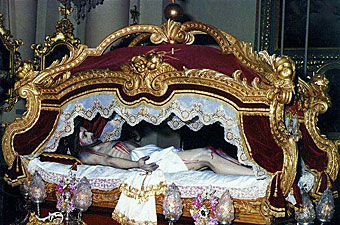
“Catholics do not worship idols, it would be a mortal sin if they did.”
Apparently there is a difference between veneration and worship? That is their argument.
I agree that the common argument against it is a bit weak, but James Jordan writes:
“This commandment is often misinterpreted as stating that no picture of God can be made. This is not what it says. What is says is that no image of anything can be set up as an avenue of worship to God and the court of heaven… Thus, the idea is not that of a “graven” image as opposed to a “molten” image or a “painted” image. The idea is that of a manmade graven object versus the God-made graven Word. The opposition is between God’s content-filled graven Words and man’s silentgraven images. The opposition of God’s verbal covenant and man’s graven images is set out in greater detail in Deuteronomy 4:15-31.”
Continue reading
Comments Off | tags: Church History, James Jordan, Roman Catholicism, Temple, Ten Commandments | posted in Biblical Theology, Ethics, The Restoration Era































